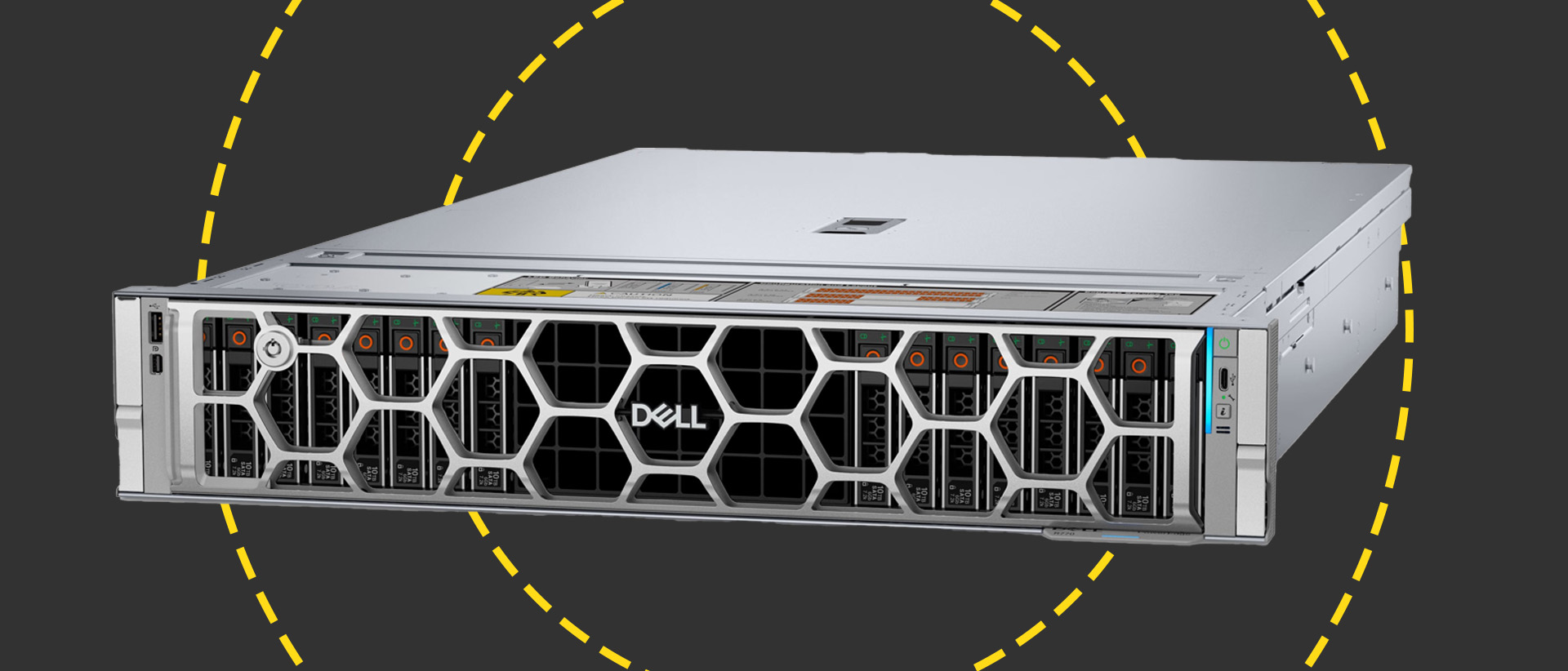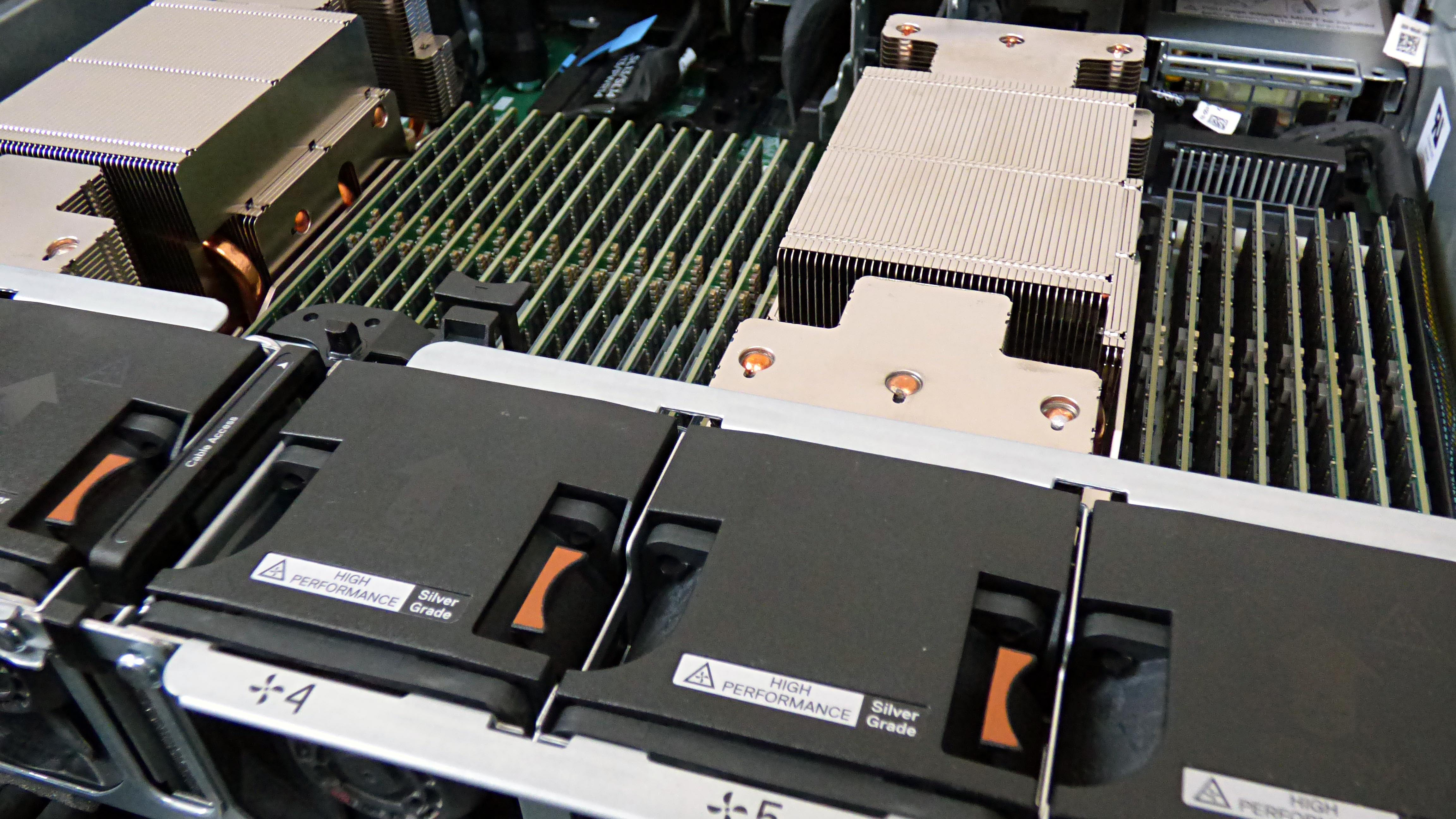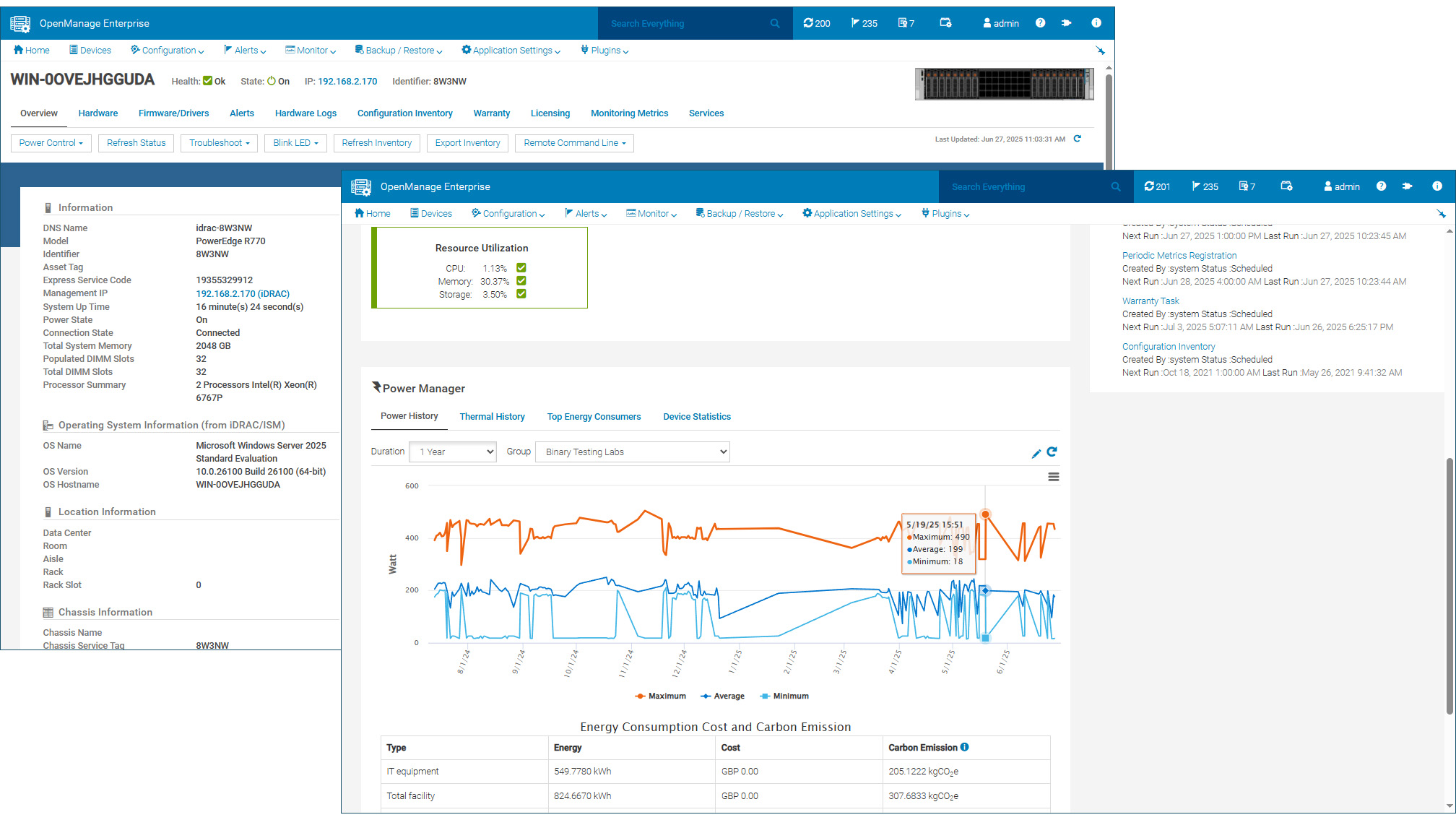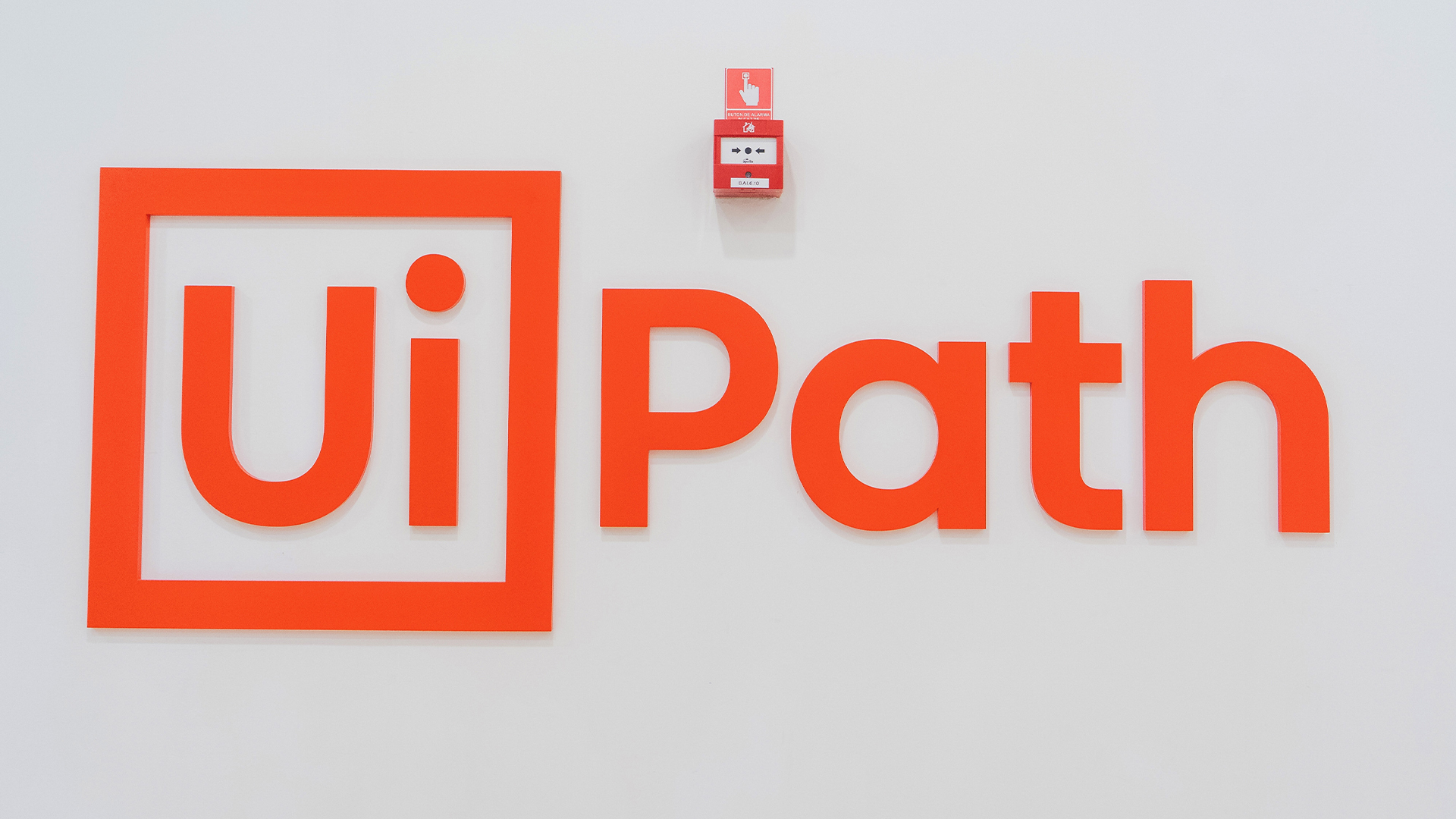Dell PowerEdge R770 review: An incredibly flexible and powerful Xeon 6 rack server
A superbly designed 2U rack server that is quite capable of handling any enterprise workload

-
+
Good value
-
+
Smart modular design
-
+
High Xeon 6 core count
-
+
Massive memory capacity
-
+
Big expansion potential
-
+
iDRAC10
-
-
Nothing of note

Every server vendor has a flagship product, and for Dell, it's always been the PowerEdge R7x0 series, as these 2U rack-mounters have traditionally been its most capable models that can turn their hand to just about any workload. The PowerEdge R770 on review takes this to the next level as it combines powerful Xeon 6 processing with vast amounts of DDR5 memory, offers plenty of storage permutations, and teams it all up with a highly flexible, modular design.
Typical workloads targeted by the R770 include virtualization, hyperscale, software-defined storage (SDS), web services, and scale-out databases. It also has AI/ML duties high on its agenda as it supports a wide choice of Nvidia and Intel GPUs, along with fast NVMe SSD storage and high-bandwidth networking options.
It can't match the sheer EPYC core density of the PowerEdge R7725 we recently reviewed, but the R770 supports two Xeon 6 P-Core CPUs up to 86 cores and E-Core models up to 144 cores. As with the R7725, it is available with air-cooling or direct liquid cooling (DLC) kits, but is more versatile as it is offered in hot and cold aisle chassis configurations.
Dell PowerEdge R770 review: Design and expansion
There's a lot of hardware inside this server, but Dell's excellent internal design makes everything very accessible. In common with all 2U Gen17 PowerEdge servers, the R770 sports a T-shaped motherboard that allows the PSUs to be positioned on each side of the chassis to improve airflow.
Our system was supplied with a pair of 64-core 2.4GHz Intel Xeon 6767P CPUs, and cooling for their 350W TDPs is ably assisted by impressively large passive heatsinks with additional radiators fore and aft. This arrangement allows the system to be specified with six hot-plug high-performance (HPC) Silver fan modules, which worked well in practice as the CPUs stayed as cool as cucumbers during testing.
Each CPU is flanked on each side by sixteen DIMM slots, and if you specify P-core CPUs, you can use 256GB modules and push total capacity to an incredible 8TB, whereas E-core CPUs support maximum DIMM sizes of 64GB and drop capacity to 2TB. Dell will also be offering the new CXL (compute express link) 2.0 memory for P-core equipped models.
Expansion potential is quite remarkable, as you have three rear risers, each offering two PCIe Gen 5 slots. These are all easily removed by undoing six thumbscrews, and underneath, you'll find two carriers, each with a single PCIe Gen 5 slot.
Sign up today and you will receive a free copy of our Future Focus 2025 report - the leading guidance on AI, cybersecurity and other IT challenges as per 700+ senior executives
There's more, as below the carriers are two OCP 3.0 slots with another connector in the centre for Dell's BOSS-N1 DC-MHS (datacenter modular hardware system) adapter. The right-hand OCP slot in our system was occupied by the iDRAC10 DC-SCM (datacenter-secure control module), with the other home to a Broadcom quad-port 25GbE network card – Dell also offers 1GbE, 10GbE, 100GbE, and 400GbE OCP options.

Dell PowerEdge R770 review: System management
Dell is clearly moving away from proprietary solutions for some server hardware components, and implementing the iDRAC10 remote management controller as a DC-SCM has many advantages. Placing all server management and security functions on a dedicated OCP-compliant board allows Dell to use a standard form factor across the entire Gen17 range and develop new features independently.
And new features are in abundance – the iDRAC10 has a dedicated security processor with a keen focus on platform and supply chain security as it enforces integrated Root-of-Trust (RoT) encryption, offers MFA (multi-factor authentication), and verifies hardware components with stronger algorithms during its secure boot phase. The iDRAC10 web console doesn't see any significant changes, but none are really needed as it's clearly the one to beat for features.
Dell estates will approve of the OpenManage Enterprise (OME) software, which provides centralised discovery, monitoring, and remote control for all its servers. We run version 4.4 as a Hyper-V VM in the lab and had no problems importing the R770's iDRAC10 into its console.
The OME free version includes discovery, hardware reporting, health monitoring, and firmware updates. An advanced licence enables the Power Manager plug-in along with server template deployment and configuration compliance, while the Advanced+ licence brings in ServiceNow integration and the VMware OMEVV plug-in. All OME versions support the APEX AIOps Observability plug-in, where they function as collectors and send server telemetry and alert logs to Dell's cloud-hosted management platform every five minutes for servers with a valid support contract.

Dell PowerEdge R770 review: Storage options
Storage sees significant changes over the R760 as the R770 isn't offered with LFF hard disk bays. That's no big deal if you're after sheer storage capacity, as Dell's lower-cost single-socket Xeon 6 R570 may be more appropriate.
The R770 is available with a great choice of SFF options ranging from 8 up to 24 SAS4/SATA devices, and if cooling is a priority, you can drop to 16 and have Dell's Smart Flow panel in the centre. The system is also available with universal drive slots so you can add up to 8 NVMe SSDs and have them direct-attached or managed by one of Dell's PERC RAID cards.
Support for E3.S NVMe SSDs is excellent as you can start with 8 devices and go up to 40 in the hot-aisle chassis. Choose the cold-aisle version and you can slot up to 16 in between the front-facing I/O panels.
More changes are afoot with Dell's fPERC RAID cards as along with the BOSS-N1 controller, they are all now DC-MHS compliant. Developed under the OCP initiative, DC-MHS is designed to standardise on server hardware components and reduce vendor lock-in, and Dell claims to be the first server OEM to fully embrace this initiative.
Dell PowerEdge R770 review: Is it worth it?
Starter prices look good as £6,300 excluding VAT gets you an entry-level R770 Smart Selection model equipped with dual 16-core 2.3GHz Xeon 6515P CPUs, 64GB of DDR5, an fPERC H965i, 16 SAS4/SATA drive bays with Smart Flow panel, one 960GB SATA SSD, two 1,100W Titanium PSUs and a 3-year ProSupport NBD contract. The system supplied to us for review costs nearly £57K excluding VAT which is comparatively good value as it delivers a very powerful package for the price.
The PowerEdge R770 is probably Dell's most versatile server yet as it combines Xeon 6 power with a huge memory capacity, plenty of GPU choices and a wide range of storage options. Available in hot and cold aisle configurations, it offers an impressive expansion potential and Dell's wholehearted adoption of the DC-MHS specification is to be applauded.
Dell PowerEdge R770 specifications
Chassis | 2U rack | Row 0 - Cell 2 |
CPU | 2 x 64-core 2.4GHz Intel Xeon 6767P | Row 1 - Cell 2 |
Memory | 2TB 6,400MT/s DDR5 (max 8TB) | Row 2 - Cell 2 |
Storage bays | 24 x SAS4/SATA SFF hot-swap universal drive bays | Row 3 - Cell 2 |
RAID | Dell fPERC H365i DC-MHS | Row 4 - Cell 2 |
Storage provided | 8 x 3.84TB SATA SSDs, 4 x 1.92TB U.2 NVMe SSDs | Row 5 - Cell 2 |
Other Storage | Dell BOSS-N1 DC-MHS with 2 x 480GB M.2 NVMe SSDs | Row 6 - Cell 2 |
Network | Broadcom quad-port 25GbE OCP | Row 7 - Cell 2 |
Expansion | 8 x PCIe Gen5 slots, 2 x OCP 3 Gen5 slots | Row 8 - Cell 2 |
Cooling | 6 x HPR Silver hot-plug fans | Row 9 - Cell 2 |
Power | 2 x 1,500W Titanium hot-plug FTR PSUs | Row 10 - Cell 2 |
Management | Dell iDRAC10 DC-SCM Datacenter | Row 11 - Cell 2 |
Warranty | 3Yr ProSupport On-Site NBD | Row 12 - Cell 2 |
Dave is an IT consultant and freelance journalist specialising in hands-on reviews of computer networking products covering all market sectors from small businesses to enterprises. Founder of Binary Testing Ltd – the UK’s premier independent network testing laboratory - Dave has over 45 years of experience in the IT industry.
Dave has produced many thousands of in-depth business networking product reviews from his lab which have been reproduced globally. Writing for ITPro and its sister title, PC Pro, he covers all areas of business IT infrastructure, including servers, storage, network security, data protection, cloud, infrastructure and services.
-
 Salesforce targets better data, simpler licensing to spur Agentforce adoption – and its acquisition of Informatica is key
Salesforce targets better data, simpler licensing to spur Agentforce adoption – and its acquisition of Informatica is keyNews The combination of Agentforce 360, Data 360, and Informatica is more context for enterprise AI than ever before
By Rory Bathgate Published
-
 UiPath partners with Veeva to streamline application testing and validation
UiPath partners with Veeva to streamline application testing and validationNews UiPath has joined the Veeva AI partner program, pairing the software vendor’s agentic testing capabilities with Veeva Validation Management
By Daniel Todd Published
-
 Snowflake inks $200m deal with Anthropic to drive ‘Agentic AI’ in the enterprise
Snowflake inks $200m deal with Anthropic to drive ‘Agentic AI’ in the enterpriseNews The data cloud giant deepens its alliance with the AI research firm, integrating Claude models to power autonomous agents for more than 12,000 global customers
By Rene Millman Published
